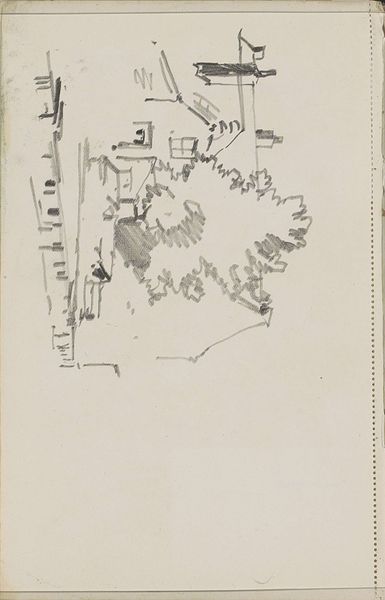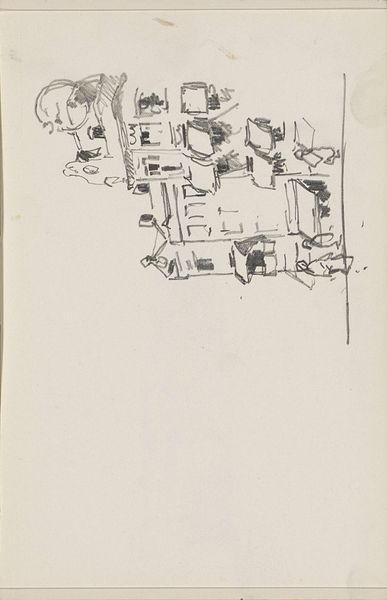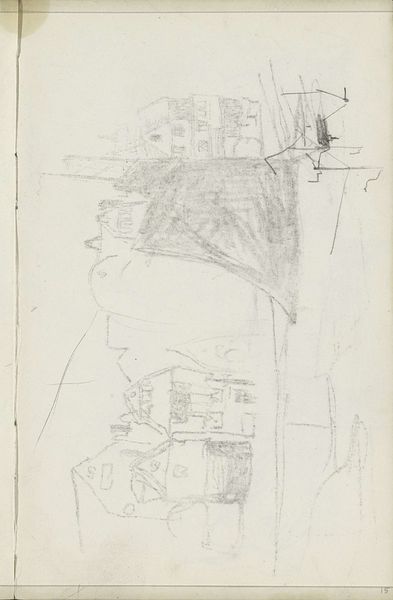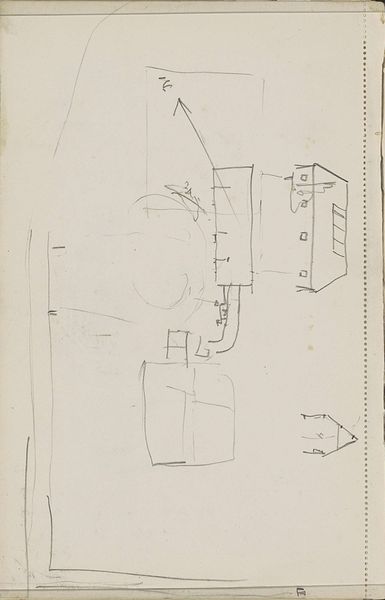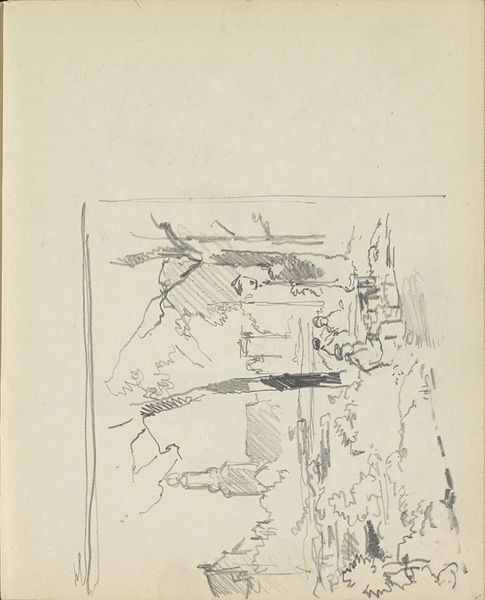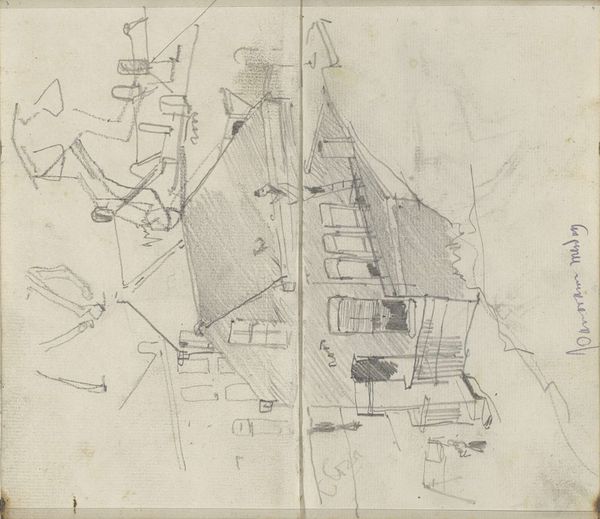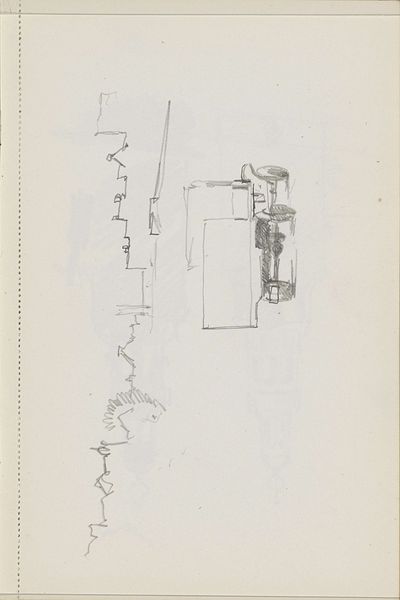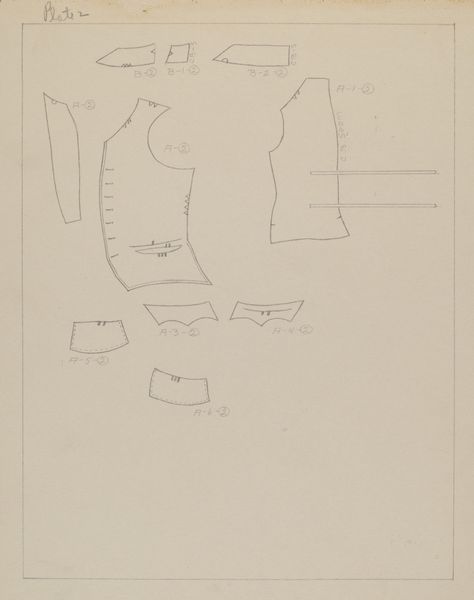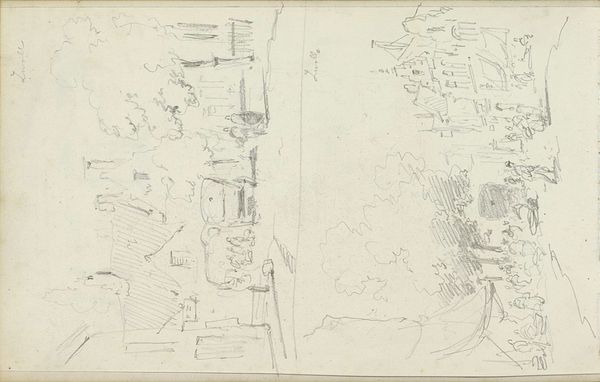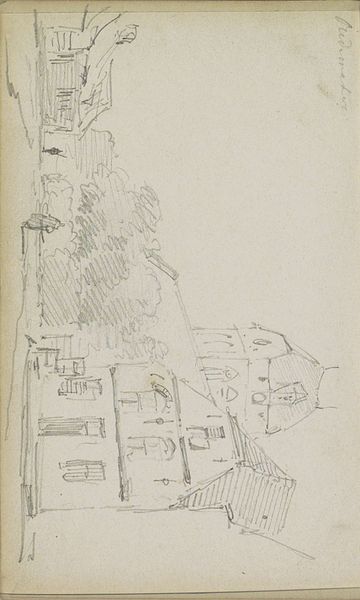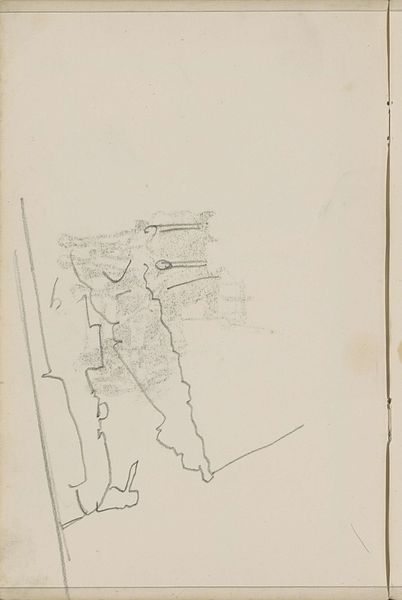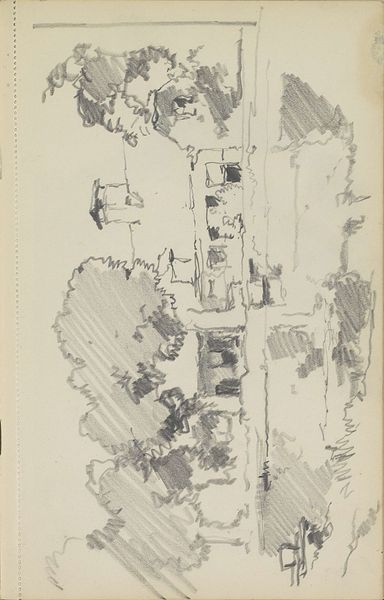
drawing, paper, pencil
#
drawing
#
quirky sketch
#
paper
#
personal sketchbook
#
idea generation sketch
#
sketchwork
#
ink drawing experimentation
#
geometric
#
pen-ink sketch
#
pencil
#
sketchbook drawing
#
cityscape
#
storyboard and sketchbook work
#
sketchbook art
#
initial sketch
#
building
Copyright: Rijks Museum: Open Domain
Curator: Looking at this small, intimate drawing entitled "Figuren voor een huis met een tuitgevel", or "Figures for a spout gable house," executed by Cornelis Vreedenburgh, likely between 1890 and 1946, the first thing that strikes me is its almost ephemeral quality. Editor: It’s like a memory glimpsed through a haze. There's an unburdened simplicity to its construction – almost childlike in a way – that speaks to a moment of free exploration. Curator: Exactly. Vreedenburgh was known for his cityscapes and architectural studies. I find this preparatory sketch fascinating as it reveals his working methods. The sketch, created using pencil and ink on paper, provides invaluable insights into the urban planning considerations of his time. Editor: Considering Vreedenburgh's body of work, doesn’t this almost feel like a rebellious divergence from the constraints of precise architectural renderings? Perhaps he was actively confronting those limitations. What would an abstracted domestic space mean, outside the typical architectural and patriarchal framework? Curator: A keen observation. While his public-facing art positioned buildings within formal arrangements, these personal sketches reveal how urban spaces were, perhaps, initially filtered through individual feeling. We see not just brick and mortar, but human figures interspersed between geometric facades. Editor: Yes, and this interplay elevates a humble, almost unassuming work to something more politically loaded. There are ways in which the intersectionality of home, identity, and environment could become legible. After all, whose perspective are we offered here? Is the building really "neutral" within a historical context of urbanization, development, and their effects? Curator: These provisional strokes and understated details can prompt profound reflections on the relationship between the artist and subject, especially concerning marginalized voices. Editor: Precisely, thinking about the legacy of urban planning—who designs, who benefits, and who is displaced—that preliminary, seemingly benign sketch now operates in my mind as the foundation to ask tougher questions regarding societal progress and equitable development. Curator: It serves as a great example of how seemingly minor works provide powerful insight into the development of larger socio-political forces. Editor: Definitely a conversation starter, proving you don't need grandiose statements to spark meaningful debate!
Comments
No comments
Be the first to comment and join the conversation on the ultimate creative platform.
